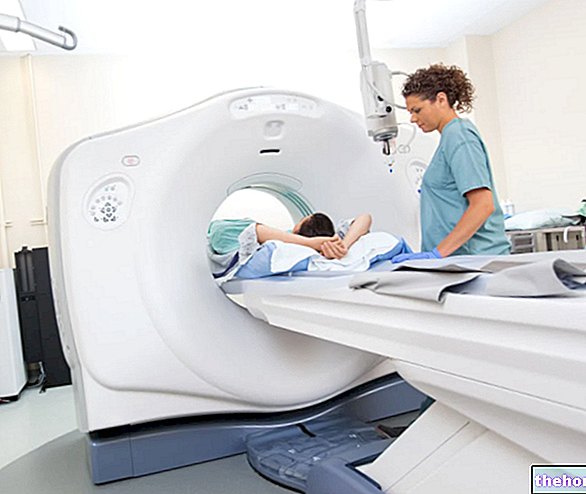Watch the video
- Watch the video on youtube
From 21-25 years of age, international guidelines recommend having a pap smear once every 3 years, at least until the age of 50-60. In this regard, there is a certain variability in the recommendations, based on the research institution considered; embracing the position of the Italian Ministry of Health, the execution of the pap test is recommended from the age of 25 and must be repeated every three years until the age of 65. years. After 30/35 years the exam can be replaced by the HPV test, to be repeated every 5 years in case of negative results.
In both cases, closer examinations (the old guidelines suggested performing the pap test every 1-2 years) not only do not increase the benefits in contrasting cervical cancer, but - highlighting a greater number of lesions that spontaneously regress - do harm in terms of over-treatment.
The importance of the pap smear derives from its ability to identify early the possible presence of pre-neoplastic anomalies, not detectable with a simple gynecological examination.
- The function of the pap-test is to identify any changes in the cells of the cervix before they become cancerous. For this reason, undergoing a regular gynecological check-up means actively and effectively protecting one's health and life.
In the presence of positive results, it is therefore possible to opt for a careful monitoring of the situation or for a prompt and adequate pharmacological or surgical intervention.
The results of the pap smear, usually delivered after two weeks, are first of all divided into:
Negative Pap test: the epithelial cells of the cervix taken during the test resulted normal; consequently no treatment is necessary; the patient is however asked to repeat the pap test after the time period agreed with the doctor
Abnormal (positive) Pap test: in the epithelial cells of the cervix taken during the examination it is possible to highlight anomalies, the nature and severity of which are described by purely medical terms, apparently incomprehensible, which we will analyze during the " item.
PLEASE NOTE: During a pap smear the doctor may notice the presence of any ongoing vaginal infections, due to fungi (eg Candida albicans), bacteria (eg Coccobacilli), protozoa (eg Thrichomonas) and viruses ( e.g. herpes virus, human papillomavirus or HPV); in this case the specialist prescribes the appropriate therapy or a vaginal swab to identify the responsible germ and establish the most suitable therapy. In the event of a negative result for intraepithelial lesions or malignancy, the pathologist can in any case specify that he has found the presence of such microorganisms, or of reactive cellular modifications (of an inflammatory nature, from radiation, or due to the presence of intrauterine devices), of signs of cell atrophy or post-hysterectomy glandular cell atrophy.
Abnormal Pap Test? Best not to be too alarmed
First of all it is important not to alarm excessively: from the moment of the HPV infection to the possible onset of a malignant cervical tumor many years pass, usually at least a decade.


Abnormal Pap smear results are reported according to Bethesda System guidelines; the meaning of the various abbreviations is shown in the tables below. Before analyzing it, however, it is important to clarify some important concepts:
- squamous cells are cells of the external lining of the cervix (also called exocervix) that protrudes into the vagina: it continues at the top with the endocervix and at the bottom with the vaginal mucosa → it consists of a stratified squamous epithelium, identical to the vaginal epithelium, and devoid of glands.
- the glandular cells are cells of the innermost lining of the cervix (also called endocervix) which continues above with the uterine endometrium and at the bottom with the exocervix → is covered by a single layer of mucus-secreting cells, and contains numerous glands
- the two epithelia join in the so-called squamocolonnar junction, where irregular areas of squamous and glandular epithelium are identified → it is precisely in this area that precancerous lesions of the cervix generally develop
- dysplastic is defined as a tissue that presents precancerous anomalies of various degrees in its structure
- A precancerous condition is defined as a condition that could precede the development of cancer
Some reassuring data
The pap smear is a very reliable test to detect the presence of possible cellular alterations of the cervix (uterine cervix or portio). The confirmation or exclusion of this possibility, as well as the identification of the type of alteration, are the prerogative of other tests, such as colposcopy and possibly biopsy. alterations are confirmed in these tests, in the great majority of cases they are inflammations or pre-tumor lesions, easily treatable in a decisive manner. These therapies, which result in healing in almost 100% of cases, are mostly simple and painless.
- A "positive" cytological result on the pap smear does not automatically mean the presence of a lesion, nor the need for surgery; rather, it requires in-depth diagnostic analysis with second level investigations
For these reasons, an abnormal pap smear, having no diagnostic significance, must NOT be a source of excessive anxiety or worry.
As anticipated, the possible cell alterations are highlighted under the microscope and described in the report according to the Bethesda 2001 international classification, which defines the "non-negative" findings in the following categories
It represents the most frequent situation of cytological abnormality detected during a pap smear. Basically, this is a diagnosis of uncertain interpretation: the pap test revealed the presence of atypical squamous cells at the level of the surface of the cervix; however, their characteristics do not allow to attribute a specific meaning, let alone a malignant nature Only rarely is this change attributable to a pre-tumor state, more often it is related to simple inflammation or to the natural condition of menopause. To establish its exact nature, further investigations are necessary. In most cases, the subsequent colposcopic examination is negative and only sometimes it is necessary to perform anti-inflammatory or hormonal therapy. As an alternative to colposcopy, the doctor can opt for the execution of an HPV DNA Test, an examination that allows to identify HPVs with high oncogenic risk in the cell sample taken during the pap-test; cervical cancer is in fact caused from some particular strains of HPV (16 and 18 in primis), whose identification allows to establish the opportunity to undergo colposcopy and possible therapy.
Again, the interpretation of the results of the pap smear is characterized by uncertainty. Less frequent than the previous one, this report underlines that there is the possibility of a more important pathology, such as high-grade squamous lesion (HSIL, roughly corresponding to CIN2 or CIN3). In statistical terms, it is associated with the presence of high-grade dysplasia in 20-50% of cases and this supports the strict indication for immediate colposcopic examination.
It is the most common condition after ASC-US, although rarer. This Pap test result indicates the presence of slight changes in the shape and size of the squamous cells of the epithelial surface, roughly corresponding to CIN.
In many cases, alterations are also associated that suggest the presence of the HPV virus (Human Papilloma Virus). Considering the possibility of spontaneous regression, which occurs in about 50% of cases, the approach is that of waiting and the tendency to conservative therapy. The doctor can therefore request further tests, such as colposcopy, or limit himself to suggesting subsequent cytological checks every 6 months. As an alternative to colposcopy, the doctor can opt for the execution of an HPV DNA Test. In most cases this alteration resolves spontaneously, in a smaller percentage it evolves into HSIL.
The squamous cells, collected at the time of the pap smear, show significant changes from normal, which suggest the presence of a tumor lesion (moderate or severe dysplasia, roughly corresponding to CIN2 / CIN3) but still limited in its extent. Also in this case often there are alterations that suggest the presence of the HPV virus. This finding requires the immediate execution of a colposcopy with possible biopsy.
This outcome is even rarer (less than 0.2% of abnormal pap smears). This definition indicates severe changes in the squamous cells of the epithelial surface of the cervix, which in any case must always be confirmed with other tests. It is necessary to urgently perform a colposcopy to access the subsequent staging-therapeutic process.
- endometrial (endometrial AGC)
- endocervical (endocervical AGC)
- or whose headquarters cannot be identified (AGC-NOS).
which present alterations which are not well determined. The diagnosis of uncertain interpretation implies the need for further investigation and possible hysteroscopy.
Less frequent result than the previous one, with respect to which it does not exclude the possibility of a more important pathology. Being once again of uncertain interpretation, it implies the need for further investigations and possible hysteroscopy.
Fortunately, such a result, very rare (less than 0.1% of abnormal pap smears), indicates the presence of severe changes in the superficial glandular cells that line the cervical canal. A tumor significance can be attributed to these alterations, which is why it is necessary to urgently perform a colposcopy and / or a "hysteroscopy" to access the subsequent staging-therapeutic path.
Equally rare result (less than 0.1% of abnormal pap smears) indicating severe changes in the glandular cells lining the cervical canal (endocervical adenocarcinoma), or the uterine cavity (endometrial adenocarcinoma), or the site of which cannot be identified (adenocarcinoma nos). In any case, other diagnostic tests are necessary: it is necessary to urgently perform a colposcopy and / or a "hysteroscopy" to access the subsequent staging-therapeutic path.
As mentioned, in-depth examinations are colposcopy which can be followed, if the specialist deems it appropriate, also by cervical biopsy:
- Colposcopy is a non-bloody diagnostic procedure carried out using a colposcope, that is an optical instrument that enlarges the uterine cervix up to 30 times and thus allows to localize the abnormal areas and to guide any biopsies.
- The biopsy consists of taking a small piece of tissue from the neck of the uterus which is then sent for histological examination
Any therapy is effective in almost 100% of cases (see: drugs for the treatment of cervical cancer).
Other articles on "Pap test results: how to read and interpret them"
- When to undergo pap smears and HPV tests
- PAP test
- Pap smear and prevention
- Pap test: when to do it?
- Colposcopy
- Colposcopy results: read and interpret them




























